IUPAC ID Carbon monoxide Density 1.14 kg/m³ Melting point -205 °C | Formula CO Molar mass 28.01 g/mol Boiling point -191.5 °C | |
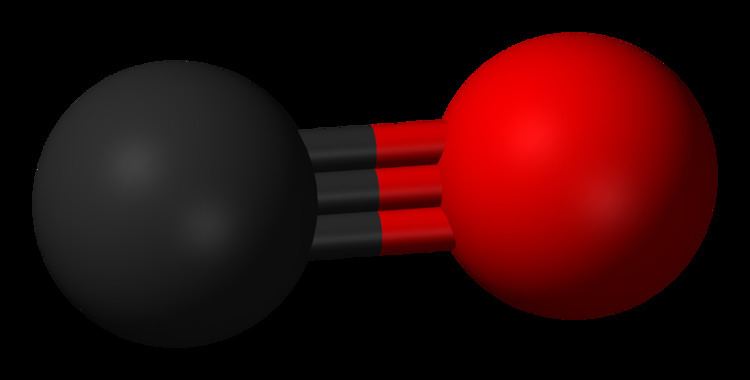 | ||
Related carbon oxides Thermodynamicdata Phase behavioursolid–liquid–gas Soluble in Water, Acetic acid, Benzene, Ethyl acetate, Ammonia solution, Ethanol, Chloroform | ||
Why is carbon monoxide so deadly gtkam
Carbon monoxide (CO) is a colorless, odorless, and tasteless gas that is slightly less dense than air. It is toxic to hemoglobic animals (both invertebrate and vertebrate, including humans) when encountered in concentrations above about 35 ppm, although it is also produced in normal animal metabolism in low quantities, and is thought to have some normal biological functions. In the atmosphere, it is spatially variable and short lived, having a role in the formation of ground-level ozone.
Contents
- Why is carbon monoxide so deadly gtkam
- History
- Molecular properties
- Bonding and dipole moment
- Bond polarity and oxidation state
- Toxicity
- Normal human physiology
- Microbiology
- Occurrence
- Atmospheric presence
- Urban pollution
- Role in ground level ozone formation
- Indoor pollution
- Presence in blood
- Astrophysics
- Production
- Industrial production
- Laboratory preparation
- Coordination chemistry
- Organic and main group chemistry
- Chemical industry
- Meat coloring
- Medicine
- Lasers
- Niche uses
- References
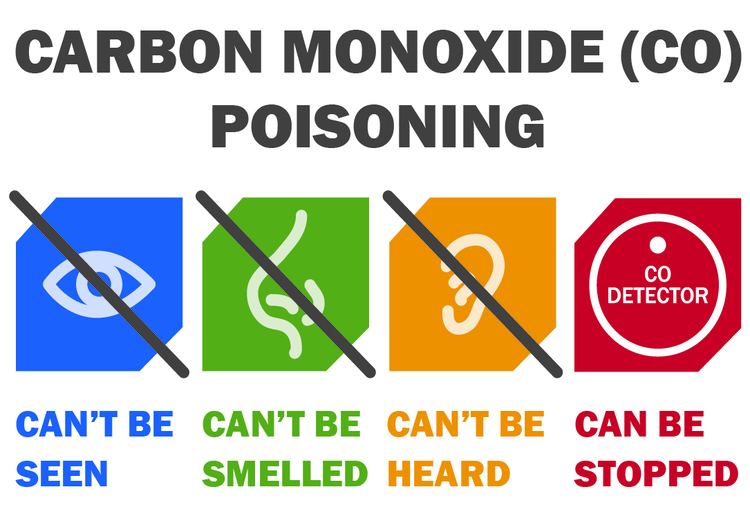
Carbon monoxide consists of one carbon atom and one oxygen atom, connected by a triple bond that consists of two covalent bonds as well as one dative covalent bond. It is the simplest oxocarbon and is isoelectronic with the cyanide anion, the nitrosonium cation and molecular nitrogen. In coordination complexes the carbon monoxide ligand is called carbonyl.
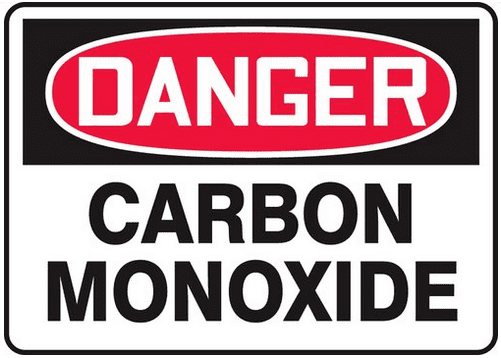
History
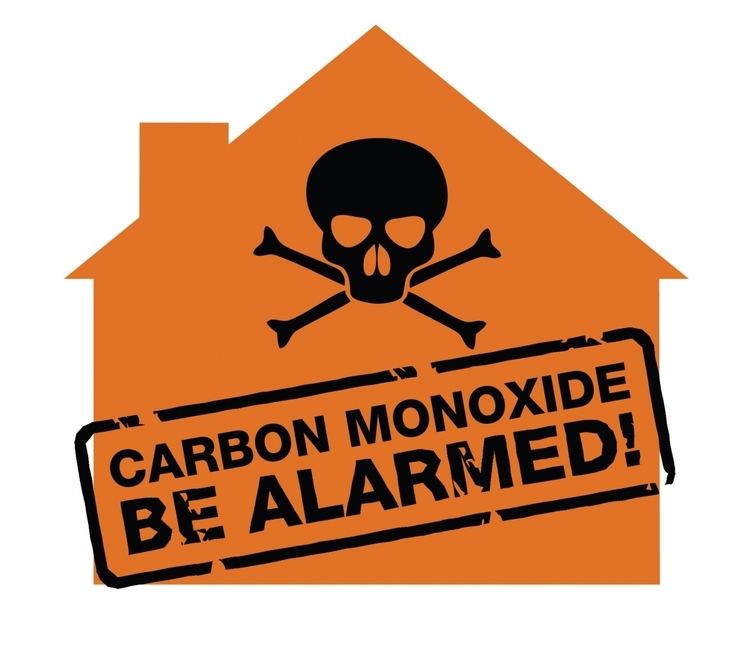
Aristotle (384–322 BC) first recorded that burning coals produced toxic fumes. An ancient method of execution was to shut the criminal in a bathing room with smoldering coals. What was not known was the mechanism of death. Greek physician Galen (129–199 AD) speculated that there was a change in the composition of the air that caused harm when inhaled. In 1776, the French chemist de Lassone produced CO by heating zinc oxide with coke, but mistakenly concluded that the gaseous product was hydrogen, as it burned with a blue flame. The gas was identified as a compound containing carbon and oxygen by the Scottish chemist William Cumberland Cruikshank in 1800. Its toxic properties on dogs were thoroughly investigated by Claude Bernard around 1846.
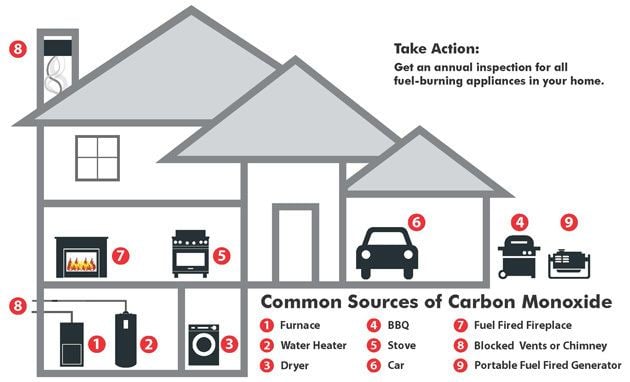
During World War II, a gas mixture including carbon monoxide was used to keep motor vehicles running in parts of the world where gasoline and diesel fuel were scarce. External (with a few exceptions) charcoal or wood gas generators were fitted, and the mixture of atmospheric nitrogen, carbon monoxide, and small amounts of other gases produced by gasification was piped to a gas mixer. The gas mixture produced by this process is known as wood gas. Carbon monoxide was also used on a large scale during the Holocaust at some Nazi German extermination camps, the most notable by gas vans in Chelmno, and in the Action T4 "euthanasia" program.
Molecular properties
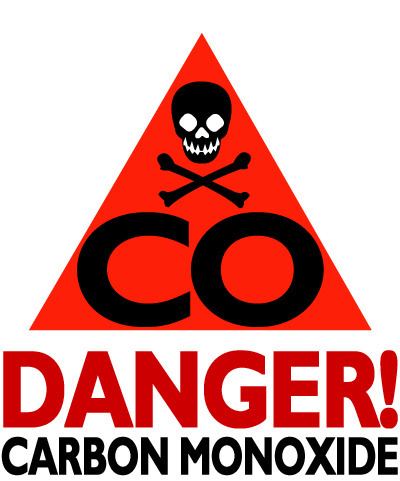
Carbon monoxide has a molar mass of 28.0, which, according to the ideal gas law, makes it slightly less dense than air, whose average molar mass is 28.8.
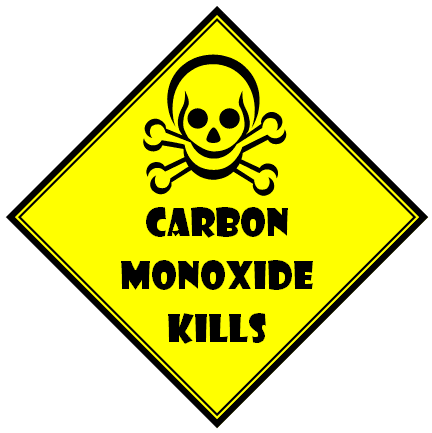
The bond length between the carbon atom and the oxygen atom is 112.8 pm. This bond length is consistent with a triple bond, as in molecular nitrogen (N2), which has a similar bond length and nearly the same molecular mass. Carbon–oxygen double bonds are significantly longer, 120.8 pm in formaldehyde, for example. The boiling point (82 K) and melting point (68 K) are very similar to those of N2 (77 K and 63 K, respectively). The bond-dissociation energy of 1072 kJ/mol is stronger than that of N2 (942 kJ/mol) and represents the strongest chemical bond known.
The ground electronic state of carbon monoxide is a singlet state since there are no unpaired electrons.
Bonding and dipole moment
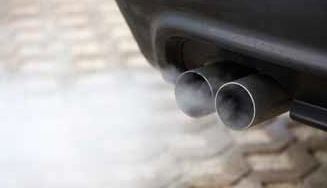
Carbon and oxygen together have a total of 10 electrons in the valence shell. Following the octet rule for both carbon and oxygen, the two atoms form a triple bond, with six shared electrons in three bonding molecular orbitals, rather than the usual double bond found in organic carbonyl compounds. Since four of the shared electrons come from the oxygen atom and only two from carbon, one bonding orbital is occupied by two electrons from oxygen, forming a dative or dipolar bond. This causes a C ← O polarization of the molecule, with a small negative charge on carbon and a small positive charge on oxygen. The other two bonding orbitals are each occupied by one electron from carbon and one from oxygen, forming (polar) covalent bonds with a reverse C → O polarization, since oxygen is more electronegative than carbon. In the free carbon monoxide, a net negative charge δ- remains at the carbon end and the molecule has a small dipole moment of 0.122 D.
The molecule is therefore asymmetric: oxygen has more electron density than carbon, and is also slightly positively charged compared to carbon being negative. By contrast, the isoelectronic dinitrogen molecule has no dipole moment.
If carbon monoxide acts as a ligand, the polarity of the dipole may reverse with a net negative charge on the oxygen end, depending on the structure of the coordination complex. See also the section "Coordination chemistry" below.
Bond polarity and oxidation state
Theoretical and experimental studies show that, despite the greater electronegativity of oxygen, the dipole moment points from the more-negative carbon end to the more-positive oxygen end. The three bonds are in fact polar covalent bonds that are strongly polarized. The calculated polarization toward the oxygen atom is 71% for the σ-bond and 77% for both π-bonds.
The oxidation state of carbon in carbon monoxide is +2 in each of these structures. It is calculated by counting all the bonding electrons as belonging to the more electronegative oxygen. Only the two non-bonding electrons on carbon are assigned to carbon. In this count, carbon then has only two valence electrons in the molecule compared to four in the free atom.
Toxicity
Carbon monoxide poisoning is the most common type of fatal air poisoning in many countries. Carbon monoxide is colorless, odorless, and tasteless, but highly toxic. It combines with hemoglobin to produce carboxyhemoglobin, which usurps the space in hemoglobin that normally carries oxygen, but is ineffective for delivering oxygen to bodily tissues. Concentrations as low as 667 ppm may cause up to 50% of the body's hemoglobin to convert to carboxyhemoglobin. A level of 50% carboxyhemoglobin may result in seizure, coma, and fatality. In the United States, the OSHA limits long-term workplace exposure levels above 50 ppm.
The most common symptoms of carbon monoxide poisoning may resemble other types of poisonings and infections, including symptoms such as headache, nausea, vomiting, dizziness, fatigue, and a feeling of weakness. Affected families often believe they are victims of food poisoning. Infants may be irritable and feed poorly. Neurological signs include confusion, disorientation, visual disturbance, syncope (fainting), and seizures.
Some descriptions of carbon monoxide poisoning include retinal hemorrhages, and an abnormal cherry-red blood hue. In most clinical diagnoses these signs are seldom noticed. One difficulty with the usefulness of this cherry-red effect is that it corrects, or masks, what would otherwise be an unhealthy appearance, since the chief effect of removing deoxygenated hemoglobin is to make an asphyxiated person appear more normal, or a dead person appear more lifelike, similar to the effect of red colorants in embalming fluid. The "false" or unphysiologic red-coloring effect in anoxic CO-poisoned tissue is related to the meat-coloring commercial use of carbon monoxide, discussed below.
Carbon monoxide also binds to other molecules such as myoglobin and mitochondrial cytochrome oxidase. Exposures to carbon monoxide may cause significant damage to the heart and central nervous system, especially to the globus pallidus, often with long-term chronic pathological conditions. Carbon monoxide may have severe adverse effects on the fetus of a pregnant woman.
Normal human physiology
Carbon monoxide is produced naturally by the human body as a signaling molecule. Thus, carbon monoxide may have a physiological role in the body, such as a neurotransmitter or a blood vessel relaxant. Because of carbon monoxide's role in the body, abnormalities in its metabolism have been linked to a variety of diseases, including neurodegenerations, hypertension, heart failure, and pathological inflammation. Relative to inflammation, carbon monoxide has been shown to inhibit the movement of leukocytes to inflamed tissues, stimulate leukocyte phagocytosis of bacteria, and reduce the production of pro-inflammatory cytokines by leukocytes. In animal model studies, furthermore, carbon monoxide reduced the severity of experimentally induced bacterial sepsis, pancreatitis, hepatic ischemia/reperfusion injury, colitis, osteoarthritis, lung injury, lung transplantation rejection, and neuropathic pain while promoting skin wound healing. These actions are similar to those of Specialized pro-resolving mediators which act to dampen, reverse, and repair the tissue damage due to diverse inflammation responses. Indeed, carbon monoxide can act additively with one of these mediators (Resolvin D1) to limit inflammatory responses. The studies implicate carbon monoxide as a physiological contributor to limiting inflammation and suggest that its delivery by inhalation or carbon monoxide-forming drugs may be therapeutically useful for controlling pathological inflammatory responses.
CO functions as an endogenous signaling molecule, modulates functions of the cardiovascular system, inhibits blood platelet aggregation and adhesion, suppresses, reverses, and repairs the damage caused by inflammatory responses. It may play a role as potential therapeutic agent.
Microbiology
Carbon monoxide is a nutrient for methanogenic archaea, a building-block for acetyl coenzyme A. This is the theme for the emerging field of bioorganometallic chemistry. Extremophile micro-organisms can, thus, metabolise carbon monoxide in such locations as the thermal vents of volcanoes.
In bacteria, carbon monoxide is produced via the reduction of carbon dioxide by the enzyme carbon monoxide dehydrogenase, an Fe-Ni-S-containing protein.
CooA is a carbon monoxide sensor protein. The scope of its biological role is still unknown; it may be part of a signaling pathway in bacteria and archaea. Its occurrence in mammals is not established.
Occurrence
Carbon monoxide occurs in various natural and artificial environments. Typical concentrations in parts per million are as follows:
Atmospheric presence
Carbon monoxide is present in small amounts in the atmosphere, chiefly as a product of volcanic activity but also from natural and man-made fires (such as forest and bushfires, burning of crop residues, and sugarcane fire-cleaning). The burning of fossil fuels also contributes to carbon monoxide production. Carbon monoxide occurs dissolved in molten volcanic rock at high pressures in the Earth's mantle. Because natural sources of carbon monoxide are so variable from year to year, it is extremely difficult to accurately measure natural emissions of the gas.
Carbon monoxide is a short-lived greenhouse gas and also has an indirect radiative forcing effect by elevating concentrations of methane and tropospheric ozone through chemical reactions with other atmospheric constituents (e.g., the hydroxyl radical, OH.) that would otherwise destroy them. Through natural processes in the atmosphere, it is eventually oxidized to carbon dioxide. Carbon monoxide is both short-lived in the atmosphere (on average about two months) and spatially variable in concentration.
In the atmosphere of Venus carbon monoxide occurs as a result of the photodissociation of carbon dioxide by electromagnetic radiation of wavelengths shorter than 169 nm.
Due to its long lifetime in the mid-troposphere, carbon monoxide is also used as tracer of transport for pollutant plumes.
Urban pollution
Carbon monoxide is a temporary atmospheric pollutant in some urban areas, chiefly from the exhaust of internal combustion engines (including vehicles, portable and back-up generators, lawn mowers, power washers, etc.), but also from incomplete combustion of various other fuels (including wood, coal, charcoal, oil, paraffin, propane, natural gas, and trash).
Large CO pollution events can be observed from space over cities.
Role in ground-level ozone formation
Carbon monoxide is, along with aldehydes, part of the series of cycles of chemical reactions that form photochemical smog. It reacts with hydroxyl radical (•OH) to produce a radical intermediate •HOCO, which transfers rapidly its radical hydrogen to O2 to form peroxy radical (HO2•) and carbon dioxide (CO2). Peroxy radical subsequently reacts with nitrogen oxide (NO) to form nitrogen dioxide (NO2) and hydroxyl radical. NO2 gives O(3P) via photolysis, thereby forming O3 following reaction with O2. Since hydroxyl radical is formed during the formation of NO2, the balance of the sequence of chemical reactions starting with carbon monoxide and leading to the formation of ozone is:
CO + 2O2 + hν → CO2 + O3(where hν refers to the photon of light absorbed by the NO2 molecule in the sequence)
Although the creation of NO2 is the critical step leading to low level ozone formation, it also increases this ozone in another, somewhat mutually exclusive way, by reducing the quantity of NO that is available to react with ozone.
Indoor pollution
In closed environments, the concentration of carbon monoxide can easily rise to lethal levels. On average, 170 people in the United States die every year from carbon monoxide produced by non-automotive consumer products. However, according to the Florida Department of Health, "every year more than 500 Americans die from accidental exposure to carbon monoxide and thousands more across the U.S. require emergency medical care for non-fatal carbon monoxide poisoning" These products include malfunctioning fuel-burning appliances such as furnaces, ranges, water heaters, and gas and kerosene room heaters; engine-powered equipment such as portable generators; fireplaces; and charcoal that is burned in homes and other enclosed areas. The American Association of Poison Control Centers (AAPCC) reported 15,769 cases of carbon monoxide poisoning resulting in 39 deaths in 2007. In 2005, the CPSC reported 94 generator-related carbon monoxide poisoning deaths. Forty-seven of these deaths were known to have occurred during power outages due to severe weather, including Hurricane Katrina. Still others die from carbon monoxide produced by non-consumer products, such as cars left running in attached garages. The Centers for Disease Control and Prevention estimates that several thousand people go to hospital emergency rooms every year to be treated for carbon monoxide poisoning.
Presence in blood
Carbon monoxide is absorbed through breathing and enters the blood stream through gas exchange in the lungs. It is also produced in hemoglobin metabolism and enters the blood from the tissues, and thus is present in all normal tissues, even if not inhaled.
Normal circulating levels in the blood are 0% to 3%, are higher in smokers. Carbon monoxide levels cannot be assessed through a physical exam. Laboratory testing requires a blood sample (arterial or venous) and laboratory analysis on a CO-Oximeter. Additionally, a noninvasive carboxyhemoglobin (SpCO) test method from Pulse CO-Oximetry exists and has been validated compared to invasive methods.
Astrophysics
Outside of Earth, carbon monoxide is the second-most common molecule in the interstellar medium, after molecular hydrogen. Because of its asymmetry, the carbon monoxide molecule produces far brighter spectral lines than the hydrogen molecule, making CO much easier to detect. Interstellar CO was first detected with radio telescopes in 1970. It is now the most commonly used tracer of molecular gas in general in the interstellar medium of galaxies, as molecular hydrogen can only be detected using ultraviolet light, which requires space telescopes. Carbon monoxide observations provide much of the information about the molecular clouds in which most stars form.
Beta Pictoris, the second brightest star in the constellation Pictor, shows an excess of infrared emission compared to normal stars of its type, which is caused by large quantities of dust and gas (including carbon monoxide) near the star.
Production
Many methods have been developed for carbon monoxide's production.
Industrial production
A major industrial source of CO is producer gas, a mixture containing mostly carbon monoxide and nitrogen, formed by combustion of carbon in air at high temperature when there is an excess of carbon. In an oven, air is passed through a bed of coke. The initially produced CO2 equilibrates with the remaining hot carbon to give CO. The reaction of CO2 with carbon to give CO is described as the Boudouard reaction. Above 800 °C, CO is the predominant product:
CO2 + C → 2 CO (ΔH = 170 kJ/mol)Another source is "water gas", a mixture of hydrogen and carbon monoxide produced via the endothermic reaction of steam and carbon:
H2O + C → H2 + CO (ΔH = +131 kJ/mol)Other similar "synthesis gases" can be obtained from natural gas and other fuels.
Carbon monoxide is also a byproduct of the reduction of metal oxide ores with carbon, shown in a simplified form as follows:
MO + C → M + COCarbon monoxide is also produced by the direct oxidation of carbon in a limited supply of oxygen or air.
2C(s) + O2 → 2CO(g)Since CO is a gas, the reduction process can be driven by heating, exploiting the positive (favorable) entropy of reaction. The Ellingham diagram shows that CO formation is favored over CO2 in high temperatures.
Laboratory preparation
Carbon monoxide is conveniently produced in the laboratory by the dehydration of formic acid or oxalic acid, for example with concentrated sulfuric acid. Another method is heating an intimate mixture of powdered zinc metal and calcium carbonate, which releases CO and leaves behind zinc oxide and calcium oxide:
Zn + CaCO3 → ZnO + CaO + COSilver nitrate and iodoform also afford carbon monoxide:
CHI3 + 3AgNO3 + H2O → 3HNO3 + CO + 3AgICoordination chemistry
Most metals form coordination complexes containing covalently attached carbon monoxide. Only metals in lower oxidation states will complex with carbon monoxide ligands. This is because there must be sufficient electron density to facilitate back-donation from the metal dxz-orbital, to the π*molecular orbital from CO. The lone pair on the carbon atom in CO, also donates electron density to the dx²−y² on the metal to form a sigma bond. This electron donation is also exhibited with the cis effect, or the labilization of CO ligands in the cis position. Nickel carbonyl, for example, forms by the direct combination of carbon monoxide and nickel metal:
Ni + 4 CO → Ni(CO)4 (1 bar, 55 °C)For this reason, nickel in any tubing or part must not come into prolonged contact with carbon monoxide. Nickel carbonyl decomposes readily back to Ni and CO upon contact with hot surfaces, and this method is used for the industrial purification of nickel in the Mond process.
In nickel carbonyl and other carbonyls, the electron pair on the carbon interacts with the metal; the carbon monoxide donates the electron pair to the metal. In these situations, carbon monoxide is called the carbonyl ligand. One of the most important metal carbonyls is iron pentacarbonyl, Fe(CO)5:
Many metal-CO complexes are prepared by decarbonylation of organic solvents, not from CO. For instance, iridium trichloride and triphenylphosphine react in boiling 2-methoxyethanol or DMF to afford IrCl(CO)(PPh3)2.
Metal carbonyls in coordination chemistry are usually studied using infrared spectroscopy.
Organic and main group chemistry
In the presence of strong acids and water, carbon monoxide reacts with alkenes to form carboxylic acids in a process known as the Koch–Haaf reaction. In the Gattermann–Koch reaction, arenes are converted to benzaldehyde derivatives in the presence of AlCl3 and HCl. Organolithium compounds (e.g. butyl lithium) react with carbon monoxide, but these reactions have little scientific use.
Although CO reacts with carbocations and carbanions, it is relatively nonreactive toward organic compounds without the intervention of metal catalysts.
With main group reagents, CO undergoes several noteworthy reactions. Chlorination of CO is the industrial route to the important compound phosgene. With borane CO forms an adduct, H3BCO, which is isoelectronic with the acylium cation [H3CCO]+. CO reacts with sodium to give products resulting from C-C coupling such as sodium acetylenediolate 2Na+
·C
2O2−
2. It reacts with molten potassium to give a mixture of an organometallic compound, potassium acetylenediolate 2K+
·C
2O2−
2, potassium benzenehexolate 6K+
C
6O6−
6, and potassium rhodizonate 2K+
·C
6O2−
6.
The compounds cyclohexanehexone or triquinoyl (C6O6) and cyclopentanepentone or leuconic acid (C5O5), which so far have been obtained only in trace amounts, can be regarded as polymers of carbon monoxide.
At pressures of over 5 gigapascals, carbon monoxide converts into a solid polymer of carbon and oxygen. This is metastable at atmospheric pressure but is a powerful explosive.
Chemical industry
Carbon monoxide is an industrial gas that has many applications in bulk chemicals manufacturing. Large quantities of aldehydes are produced by the hydroformylation reaction of alkenes, carbon monoxide, and H2. Hydroformylation is coupled to the Shell higher olefin process to give precursors to detergents.
Phosgene, useful for preparing isocyanates, polycarbonates, and polyurethanes, is produced by passing purified carbon monoxide and chlorine gas through a bed of porous activated carbon, which serves as a catalyst. World production of this compound was estimated to be 2.74 million tonnes in 1989.
CO + Cl2 → COCl2Methanol is produced by the hydrogenation of carbon monoxide. In a related reaction, the hydrogenation of carbon monoxide is coupled to C-C bond formation, as in the Fischer-Tropsch process where carbon monoxide is hydrogenated to liquid hydrocarbon fuels. This technology allows coal or biomass to be converted to diesel.
In the Monsanto process, carbon monoxide and methanol react in the presence of a homogeneous rhodium catalyst and hydroiodic acid to give acetic acid. This process is responsible for most of the industrial production of acetic acid.
An industrial scale use for pure carbon monoxide is purifying nickel in the Mond process.
Meat coloring
Carbon monoxide is used in modified atmosphere packaging systems in the US, mainly with fresh meat products such as beef, pork, and fish to keep them looking fresh. The carbon monoxide combines with myoglobin to form carboxymyoglobin, a bright-cherry-red pigment. Carboxymyoglobin is more stable than the oxygenated form of myoglobin, oxymyoglobin, which can become oxidized to the brown pigment metmyoglobin. This stable red color can persist much longer than in normally packaged meat. Typical levels of carbon monoxide used in the facilities that use this process are between 0.4% to 0.5%.
The technology was first given "generally recognized as safe" (GRAS) status by the U.S. Food and Drug Administration (FDA) in 2002 for use as a secondary packaging system, and does not require labeling. In 2004, the FDA approved CO as primary packaging method, declaring that CO does not mask spoilage odor. Despite this ruling, the process remains controversial for fears that it masks spoilage. In 2007, a bill was introduced to the United States House of Representatives to label modified atmosphere carbon monoxide packaging as a color additive, but the bill died in subcommittee. The process is banned in many other countries, including Japan, Singapore, and the European Union.
Medicine
In biology, carbon monoxide is naturally produced by the action of heme oxygenase 1 and 2 on the heme from hemoglobin breakdown. This process produces a certain amount of carboxyhemoglobin in normal persons, even if they do not breathe any carbon monoxide.
Following the first report that carbon monoxide is a normal neurotransmitter in 1993, as well as one of three gases that naturally modulate inflammatory responses in the body (the other two being nitric oxide and hydrogen sulfide), carbon monoxide has received a great deal of clinical attention as a biological regulator. In many tissues, all three gases are known to act as anti-inflammatories, vasodilators, and encouragers of neovascular growth. However, the issues are complex, as neovascular growth is not always beneficial, since it plays a role in tumor growth, and also the damage from wet macular degeneration, a disease for which smoking (a major source of carbon monoxide in the blood, several times more than natural production) increases the risk from 4 to 6 times.
There is a theory that, in some nerve cell synapses, when long-term memories are being laid down, the receiving cell makes carbon monoxide, which back-transmits to the transmitting cell, telling it to transmit more readily in future. Some such nerve cells have been shown to contain guanylate cyclase, an enzyme that is activated by carbon monoxide.
Studies involving carbon monoxide have been conducted in many laboratories throughout the world for its anti-inflammatory and cytoprotective properties. These properties have potential to be used to prevent the development of a series of pathological conditions including ischemia reperfusion injury, transplant rejection, atherosclerosis, severe sepsis, severe malaria, or autoimmunity. Clinical tests involving humans have been performed, however the results have not yet been released.
Lasers
Carbon monoxide has also been used as a lasing medium in high-powered infrared lasers.
Niche uses
Carbon monoxide has been proposed for use as a fuel on Mars. Carbon monoxide/oxygen engines have been suggested for early surface transportation use as both carbon monoxide and oxygen can be straightforwardly produced from the atmosphere of Mars by zirconia electrolysis, without using any Martian water resources to obtain hydrogen, which would be needed to make methane or any hydrogen-based fuel.
